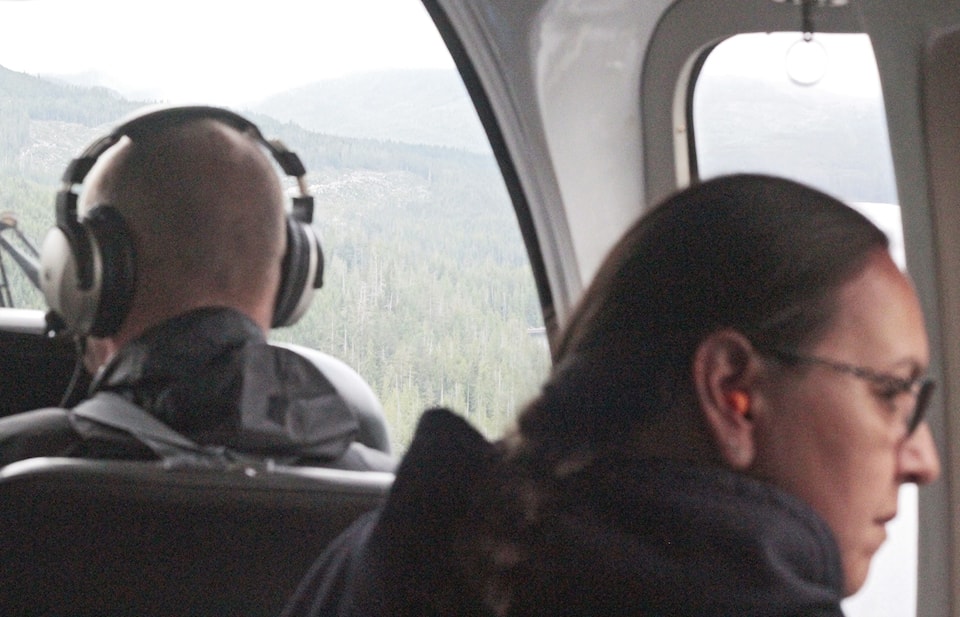In the previous article in this series (see page A3 of the April 18 edition of the Quesnel Observer), Jeanne Robert dispelled some concerns that the current spruce beetle outbreak will end up being like last decade’s mountain pine beetle epidemic.
The Omineca-Northwest regional entomologist for the Ministry of Forests, Lands, Natural Resource Operations and Rural Development explained there are significant differences between the mountain pine beetle and the spruce beetle and their ecosystems.
Noting the spruce beetle infestation is being monitored annually, Robert said they originally detected higher than normal populations of spruce beetle in 2014.
The provincial government declared an “outbreak” north of Prince George and around Mackenzie in October 2015, she said, adding at that time the spruce beetle covered 150,000 hectares in the Omineca region.
It increased in 2016 to 210,000 ha, and the 2017 aerial overview study showed the spruce beetle covered an area of 340,000 ha.
The provincial spruce beetle coverage is slightly more than 500,000 ha.
Beetle differences
Wherever there is a spruce forest, there is spruce beetle, she explained.
Usually, spruce beetle larvae feed on the cambium layer between the inner bark and the wood of dead, down and dying spruce trees. The spongy layer dries up within a year.
“That’s why the blowdown [trees that have been knocked down by wind] are a perfect habitat for spruce beetle.”
She noted it’s not unusual for spruce beetles to reach a population threshold and then move from dead and dying trees into healthier, standing green spruce trees.”
These outbreaks usually last for five to seven years.
Ecosystem difference
Pine ecosystems usually have a single species of the same age over large tracts of land.
However, a spruce ecosystem tends to be more diverse with a mix of spruce and balsam trees, and usually have longer cycling ecosystems.
They also tend to be in wetter areas and have an uneven age class, she said.
Outbreak differences
When there are [spruce beetle] breakouts, she said they tend to be in patch distributions where they take out the large trees, which allows the younger ones underneath to grow up and maintain its diverse age and trees species.
However, Robert noted she has some concerns with this current spruce beetle outbreak because its current outbreak is happening within the context of climate change.
“We have climate and weather patterns we haven’t seen historically for spruce beetle.
“Climate and weather conditions are good for all species of bark beetles, and spruce beetle is no exception.”
The entomologist said they hope this spruce beetle outbreak follows the historical trajectory – rising, peaking in five to seven years and then falling off.
“However, in this background of warmer, drier summers and milder, warmer winters, we don’t have the historical cold snap in early winter to kill off a large portion of the spruce beetle population that’s beginning to rise.”
That has allowed the spruce beetle to get a toehold, Robert added.
She explained there were large blow-down events north of Mackenzie and north of Prince George, which allowed the spruce beetle population to build up quickly over a couple of years and move into healthy, standing spruce trees.
Signs of distress
Robert said the majority of the 340,000 ha infested area has a “sprinkling” of red trees from the air, and is not like the “intense red blanket” of the pine beetle epidemic.
However, the spruce beetle infestation is difficult to monitor because it can take 13 to 18 months for the trees to change colour and to be seen from the air.
She added the Ministry of Forests (MoF) wants to be really sure about what the attack level is in the red trees.
Attack detection
The entomologist noted the MoF has several ways to detect the levels of spruce beetle infestation.
Aerial surveys give them a broad overview of the province’s forest health.
They use low-level helicopter surveys in areas of new red trees.
If they come back with reports of more red trees, they will follow up with ground surveys, Robert explained.
“We have actually expanded our ground survey program in Prince George, in Mackenzie and now into Dawson Creek and Chetwynd this year….”
Along with monitoring the spruce beetle spread, she said the MoF wants to facilitate solutions on the march of this pesky bark beetle.
For details on the mitigation plans for the spruce beetle outbreak, read part 3 of the series in the April 25 edition of the Quesnel Cariboo Observer.
